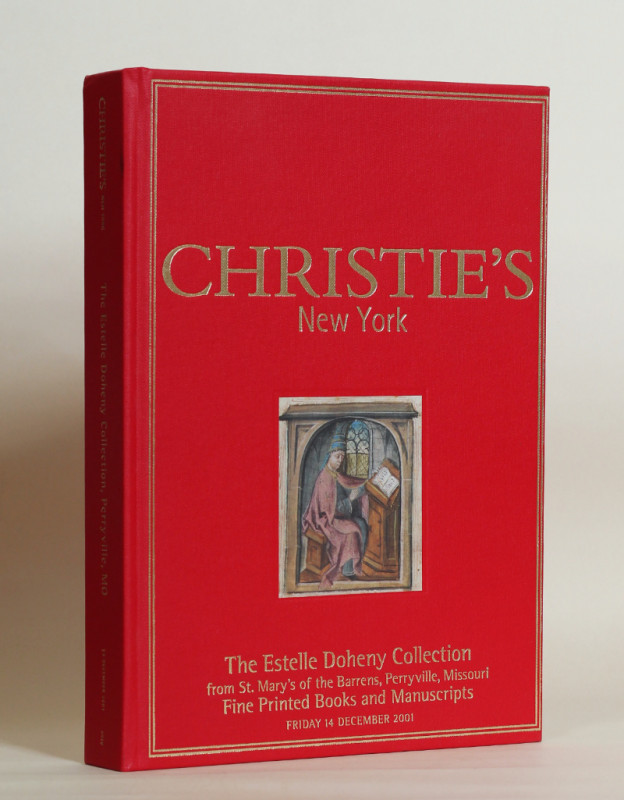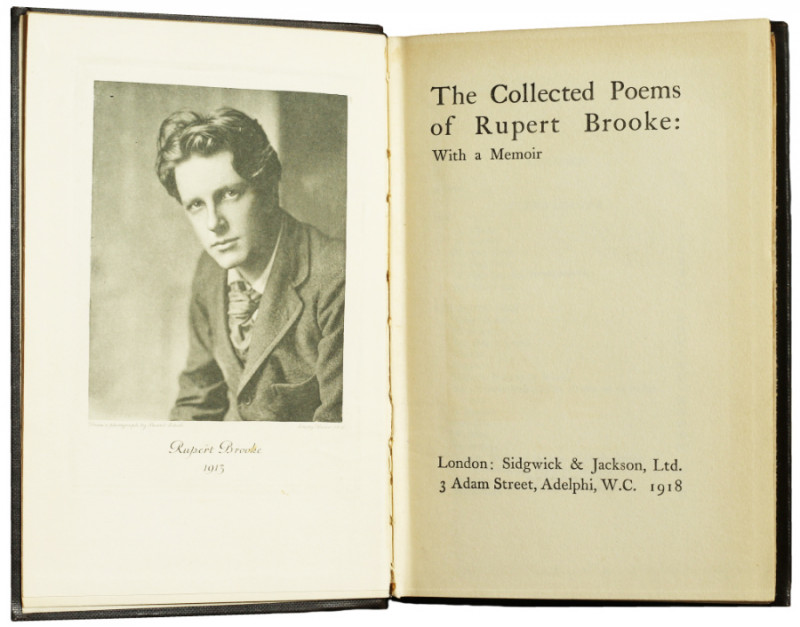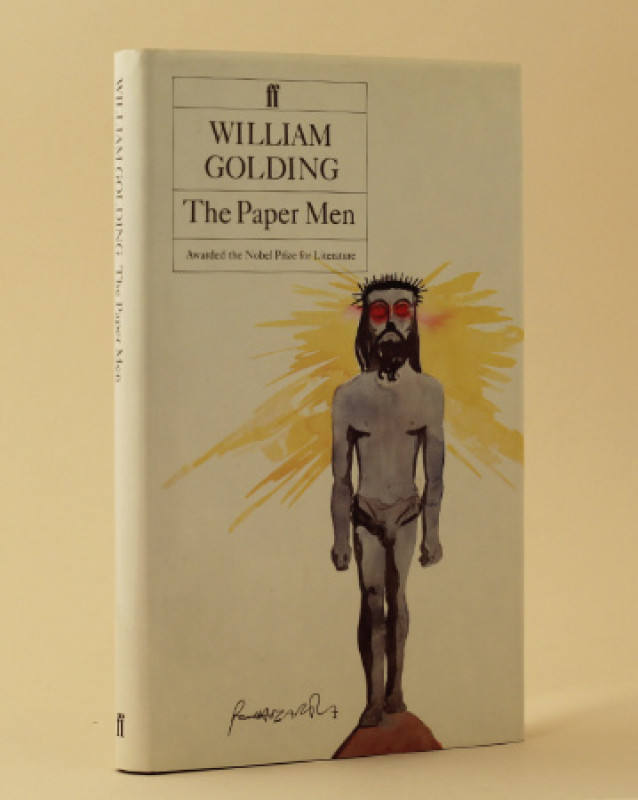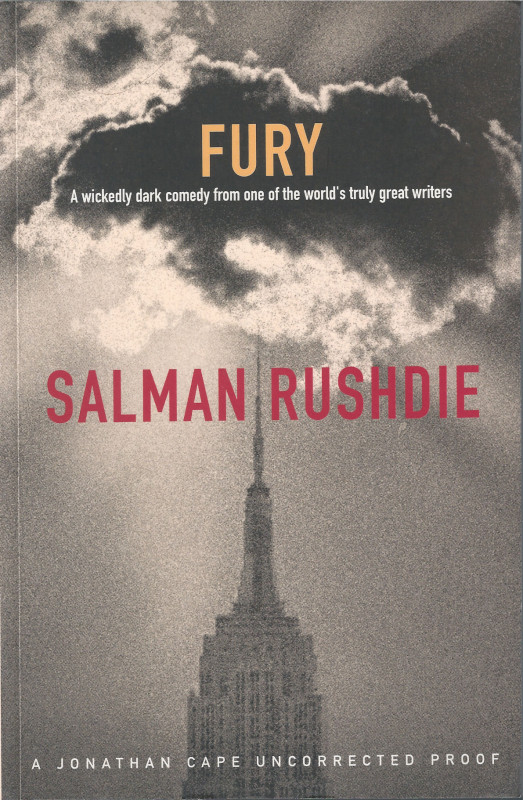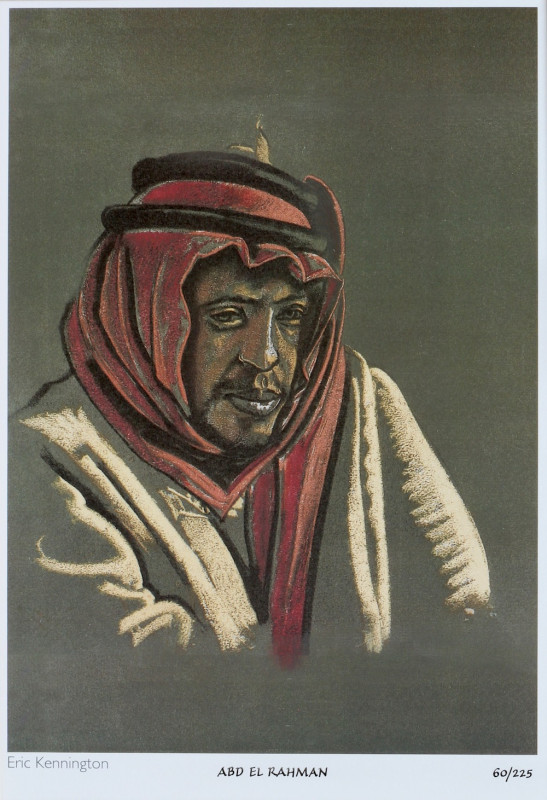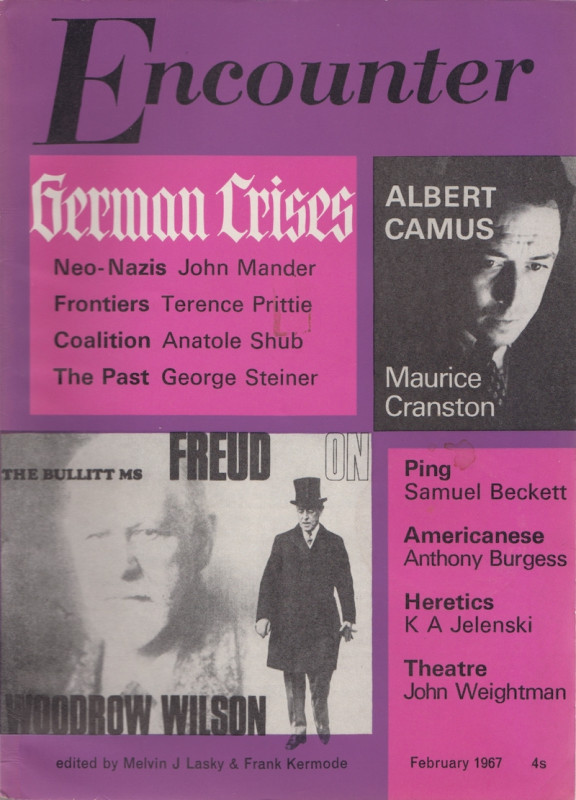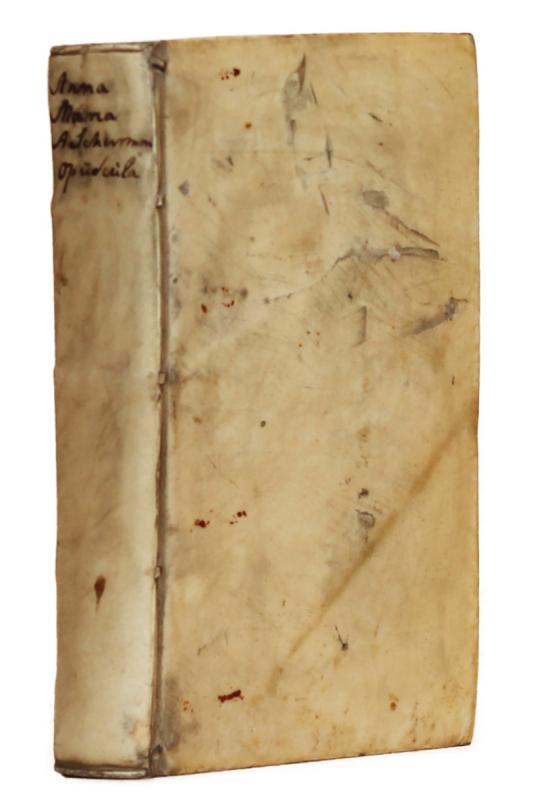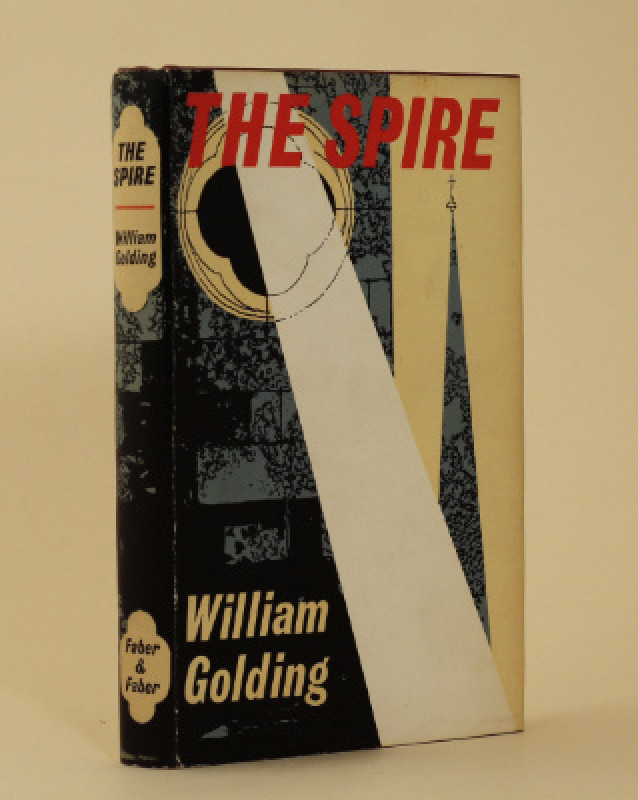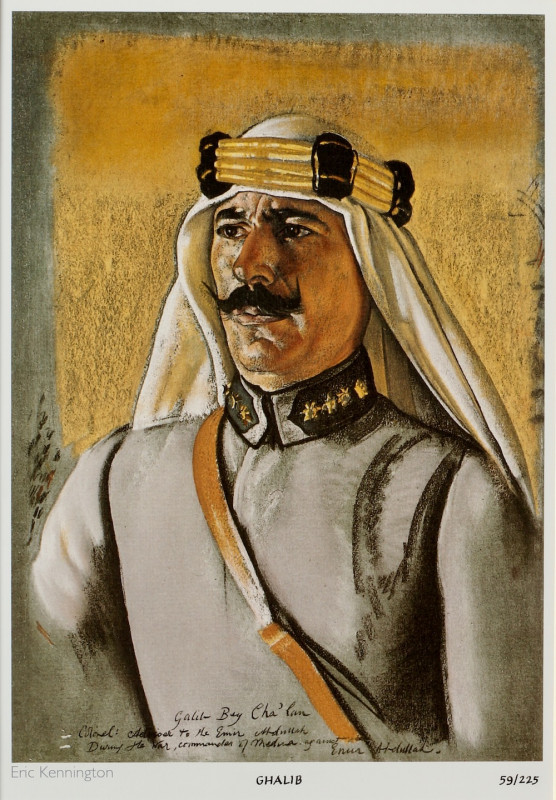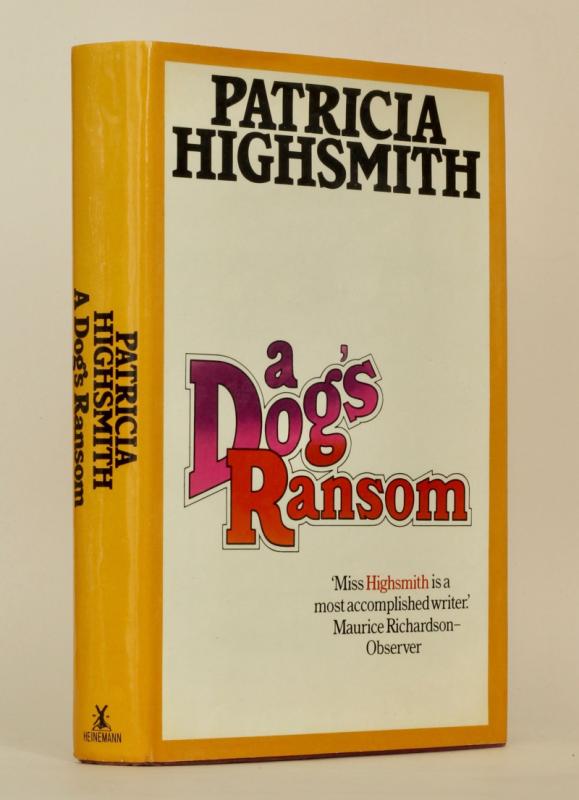In Lionland: The Story of Livingstone and Stanley [from the library of Quentin Keynes]
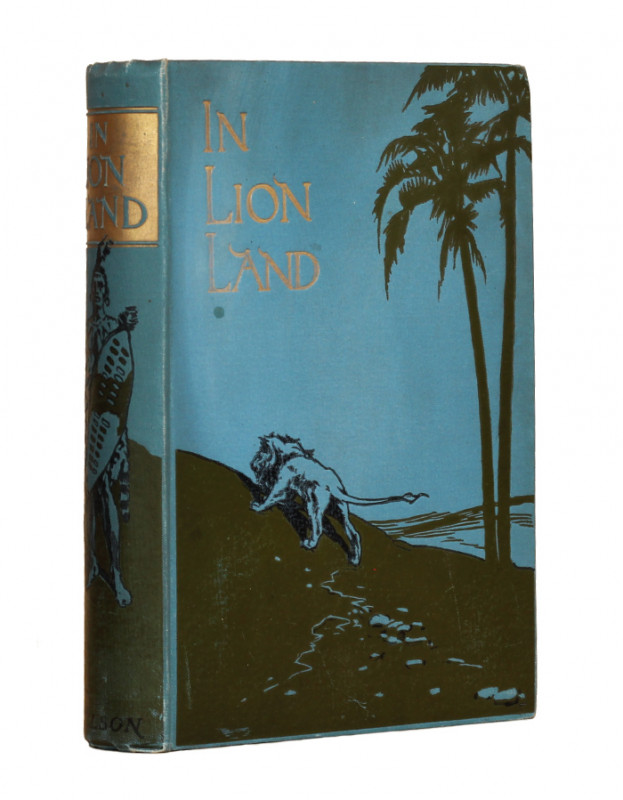
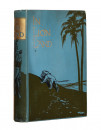


Book Description
A POPULAR ACCOUNT OF LIVINGSTONE AND STANLEY IN AFRICA, DRAWN FROM THEIR OWN ACCOUNTS
Octavo (181 x 124mm), pp. 275, [1 (blank)], [4 (publisher’s advertisements)]. Portrait frontispiece of Livingstone, retaining tissue guard, and 15 plates. (A few light spots or marks.) Original blue pictorial cloth, upper board and spine blocked with continuous design blocked in gilt, black, and green, lower board blocked in blind with publisher’s device, patterned endpapers. (Spine slightly darkened, a few small marks, extremities slightly rubbed, corners bumped.) A very good copy.
Provenance: Ritchie, Lindisfarne (ownership inscription on front free endpaper) – Quentin George Keynes FRGS (1921-2003).
Octavo (181 x 124mm), pp. 275, [1 (blank)], [4 (publisher’s advertisements)]. Portrait frontispiece of Livingstone, retaining tissue guard, and 15 plates. (A few light spots or marks.) Original blue pictorial cloth, upper board and spine blocked with continuous design blocked in gilt, black, and green, lower board blocked in blind with publisher’s device, patterned endpapers. (Spine slightly darkened, a few small marks, extremities slightly rubbed, corners bumped.) A very good copy.
Provenance: Ritchie, Lindisfarne (ownership inscription on front free endpaper) – Quentin George Keynes FRGS (1921-2003).
Dealer Notes
First edition. Mary Douglas, the author of In Lionland, wrote a number of books which were published by Nelson in the early twentieth century and intended for a youthful audience. The ‘Author’s Note’ explains that In Lionland drew upon ‘Dr. Livingstone’s “Missionary Travels and Researches”, “The Zambezi and its Tributaries”, and “Last Journals”, and […] Mr. H.M. Stanley’s “How I Found Livingstone” and “Through the Dark Continent”, in which the story of the explorers in the land where lions are at home is fully set forth’ (p. [5]). Although the title-page is dated ‘1900’, In Lionland appears to have been published in late 1899 (presumably for the Christmas market), since it was advertised at that time, priced at 2s. 6d., in The Athenaeum (no. 3759 (11 November 1899), p. 664) and The Supplement to the Saturday Review of Politics, Literature, Science, and Art (no. 2,300, vol. 88 (25 November 1899), p. viii). Despite this, it was dated for the following year – as was often the case with works issued by Victorian publishers in the final weeks of a year.
This copy was previously in the noted collection of the explorer and bibliophile Quentin Keynes, who travelled extensively in Africa throughout the second half of the twentieth century, and collected a remarkable library of books and manuscripts relating to the exploration of Africa, particularly during the nineteenth century. Some of these works provided the basis for Keynes’s Roxburghe Club book The Search for the Source of the Nile: Correspondence between Captain Richard Burton, Captain John Speke and Others, from Burton’s Unpublished East African Letter Book; together with Other Related Letters and Papers (London, 1999) and his collection was also a resource that he drew upon for his own travels in Africa. For example, in 1958, the centenary of Livingstone’s expedition up the Zambezi River, Keynes retraced Livingstone’s route and identified baobab tree into the internal cavity of which Livingstone had carved his initials on 16 September 1858. The tree – which had not previously been located – ‘was soon afterwards declared by the Portuguese government of Mozambique to be an historical monument in honour of David Livingstone’ (S.D. Keynes, Quentin Keynes: Explorer, Film-Maker, Lecturer and Book-Collector 1921-2003 (Cambridge, 2004), p. 217).
Casada, Dr. David Livingstone and Sir Henry Morton Stanley, 751; Liniger-Goumaz and Hellinga, Stanley, 767; Shercliff, Morality to Adventure: Manchester Polytechnic’s Collection of Children’s Books, 1840-1939, 578 (erroneously calling for only 14 plates); South African Bibliography II, p. 93.
* * *
This is one of the books from our recent Africa catalogue, which you may enjoy browsing. Catalogue available in our PBFA profile, or directly on www.typeandforme.com.
Please do not hesitate to contact us with any enquiries.
This copy was previously in the noted collection of the explorer and bibliophile Quentin Keynes, who travelled extensively in Africa throughout the second half of the twentieth century, and collected a remarkable library of books and manuscripts relating to the exploration of Africa, particularly during the nineteenth century. Some of these works provided the basis for Keynes’s Roxburghe Club book The Search for the Source of the Nile: Correspondence between Captain Richard Burton, Captain John Speke and Others, from Burton’s Unpublished East African Letter Book; together with Other Related Letters and Papers (London, 1999) and his collection was also a resource that he drew upon for his own travels in Africa. For example, in 1958, the centenary of Livingstone’s expedition up the Zambezi River, Keynes retraced Livingstone’s route and identified baobab tree into the internal cavity of which Livingstone had carved his initials on 16 September 1858. The tree – which had not previously been located – ‘was soon afterwards declared by the Portuguese government of Mozambique to be an historical monument in honour of David Livingstone’ (S.D. Keynes, Quentin Keynes: Explorer, Film-Maker, Lecturer and Book-Collector 1921-2003 (Cambridge, 2004), p. 217).
Casada, Dr. David Livingstone and Sir Henry Morton Stanley, 751; Liniger-Goumaz and Hellinga, Stanley, 767; Shercliff, Morality to Adventure: Manchester Polytechnic’s Collection of Children’s Books, 1840-1939, 578 (erroneously calling for only 14 plates); South African Bibliography II, p. 93.
* * *
This is one of the books from our recent Africa catalogue, which you may enjoy browsing. Catalogue available in our PBFA profile, or directly on www.typeandforme.com.
Please do not hesitate to contact us with any enquiries.
Author
DOUGLAS, Mary
Date
‘1900’ [but 1899, vide infra]
Publisher
London, Edinburgh and New York: Thomas Nelson and Sons
Friends of the PBFA
For £10 get free entry to our fairs, updates from the PBFA and more.
Please email info@pbfa.org for more information


